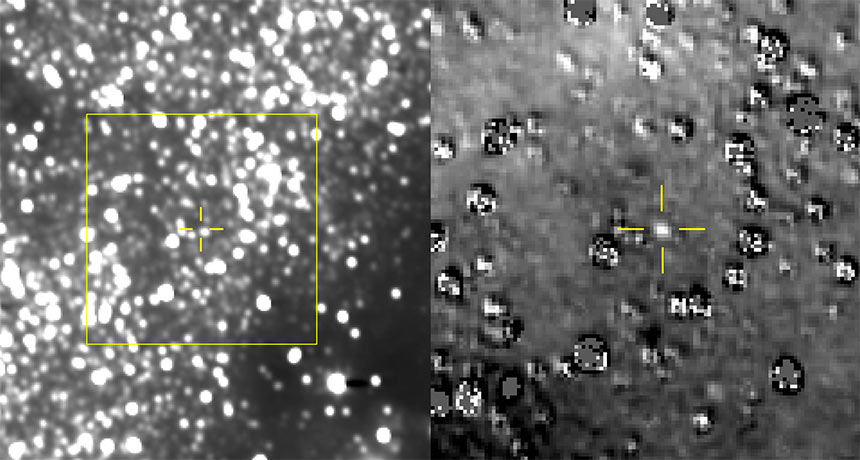New Horizons has sent back the first images of Ultima Thule, its next target

IN SIGHT Ultima Thule is barely a blip in images (left) from the New Horizons spacecraft. The remote world stands out more when the stars have been removed (right); the dark blobs are artifacts from imperfect star subtraction. Yellow crosshairs mark Ultima’s position — right where it was predicted to be.
NASA, JHUAPL, SwRI







